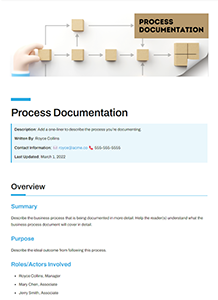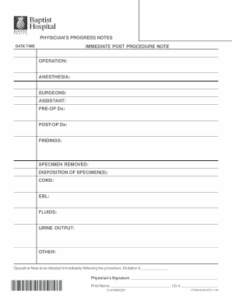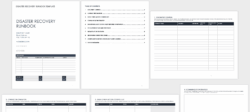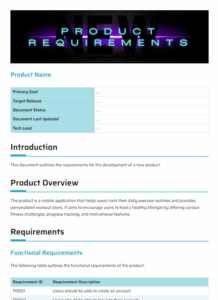Let’s face it, nobody jumps for joy at the thought of writing documentation. But when it comes to technical procedures, having clear, concise, and well-organized documentation can be the difference between smooth sailing and a total operational disaster. Think of it as the instruction manual you actually *want* to read, guiding you step-by-step through complex processes, ensuring consistency, and preventing costly errors. This isn’t just about covering your bases; it’s about empowering your team and fostering a culture of knowledge sharing.

Imagine a scenario where a critical piece of equipment malfunctions. Without proper documentation, the troubleshooting process could be a chaotic scramble, leading to extended downtime and frustrated employees. A well-crafted technical procedure documentation template provides a standardized framework for capturing the essential steps, potential issues, and necessary precautions, allowing anyone with the right skills to quickly diagnose and resolve the problem. It’s about creating a reliable resource that simplifies complex tasks.
In this article, we’ll explore the ins and outs of technical procedure documentation templates, highlighting their benefits, essential components, and best practices for creating effective guides. We’ll also look at how using a template can streamline the documentation process, saving you time and effort while ensuring your procedures are consistently documented to a high standard. Get ready to transform your documentation from a chore into a powerful asset.
Why a Technical Procedure Documentation Template is Your Best Friend
Think of a technical procedure documentation template as the blueprint for consistent and effective communication within your organization. It’s a pre-designed framework that ensures every procedure, regardless of its complexity, is documented in a standardized format. This consistency makes it easier for employees to find information, understand the steps involved, and execute procedures correctly. It eliminates guesswork and reduces the risk of errors caused by ambiguous or incomplete instructions.
The benefits of using a template extend far beyond simple convenience. A well-designed template promotes clarity by providing a structured format for presenting information. It prompts writers to include all the necessary details, such as the purpose of the procedure, required tools and materials, step-by-step instructions, safety precautions, and troubleshooting tips. This comprehensive approach minimizes the chance of misinterpretation and ensures everyone is on the same page.
Moreover, a technical procedure documentation template fosters collaboration and knowledge sharing. By using a standardized format, different team members can easily contribute to and update the documentation. This collective effort ensures that the information remains accurate and up-to-date, reflecting the latest best practices and improvements. It also creates a valuable repository of knowledge that can be accessed by anyone who needs it, empowering employees to learn and grow.
Consider the time savings associated with using a template. Instead of starting from scratch each time you need to document a new procedure, you can simply use the template as a starting point. This significantly reduces the time and effort required to create high-quality documentation, allowing you to focus on other important tasks. The template provides a ready-made structure, prompts, and formatting, eliminating the need for reinventing the wheel each time.
Finally, a technical procedure documentation template helps to ensure compliance with industry regulations and internal standards. By incorporating these requirements into the template, you can ensure that all documented procedures meet the necessary criteria. This is especially important in industries with strict regulatory requirements, such as healthcare, finance, and manufacturing. The template serves as a reminder of the key considerations and helps to maintain a consistent level of compliance across all procedures.
Essential Elements of a Powerful Technical Procedure Documentation Template
Creating a truly effective technical procedure documentation template requires careful consideration of the elements that will best serve your organization’s needs. While specific requirements will vary depending on the industry and type of procedure, certain key components are essential for ensuring clarity, accuracy, and usability.
First and foremost, the template should include a clear and concise title that accurately reflects the procedure being documented. This allows users to quickly identify the relevant procedure and avoid confusion. Following the title, a brief overview or purpose statement should be provided, explaining why the procedure is necessary and what it aims to achieve. This helps users understand the context of the procedure and its importance within the broader organization.
Next, the template should include a section for listing all the necessary tools, materials, and equipment required to perform the procedure. This ensures that users have everything they need before starting, preventing delays and frustration. The list should be specific and include details such as model numbers, sizes, and quantities. For example, instead of simply listing “screwdriver,” specify “Phillips head screwdriver, size 2.”
The heart of the template lies in the step-by-step instructions. These instructions should be clear, concise, and easy to follow, using simple language and avoiding jargon. Each step should be numbered and presented in a logical order. Where appropriate, include visual aids such as diagrams, screenshots, or videos to further clarify the instructions. Be sure to clearly mark any steps that require special attention or precautions.
Finally, a comprehensive template should include sections for troubleshooting, frequently asked questions (FAQs), and references. The troubleshooting section should address common problems that users may encounter and provide solutions. The FAQs section should answer common questions related to the procedure. The references section should list any relevant documents, websites, or other resources that users may find helpful. These additional sections enhance the usability of the template and provide users with a comprehensive resource for performing the procedure successfully. Consistently using a technical procedure documentation template ensures a baseline level of quality.
By incorporating these essential elements into your technical procedure documentation template, you can create a powerful tool that empowers your employees, reduces errors, and improves overall efficiency. Remember to regularly review and update your template to ensure it remains relevant and effective.
Investing time in creating and utilizing well-structured documentation ultimately contributes to a more efficient and knowledgeable workforce. The benefits extend beyond immediate problem-solving; it fosters a culture of continuous improvement.
Consider the long-term impact of easily accessible and understandable procedures. Not only does it empower current employees, but it also streamlines the onboarding process for new team members, ensuring they quickly become productive and contribute to the overall success of the organization.



